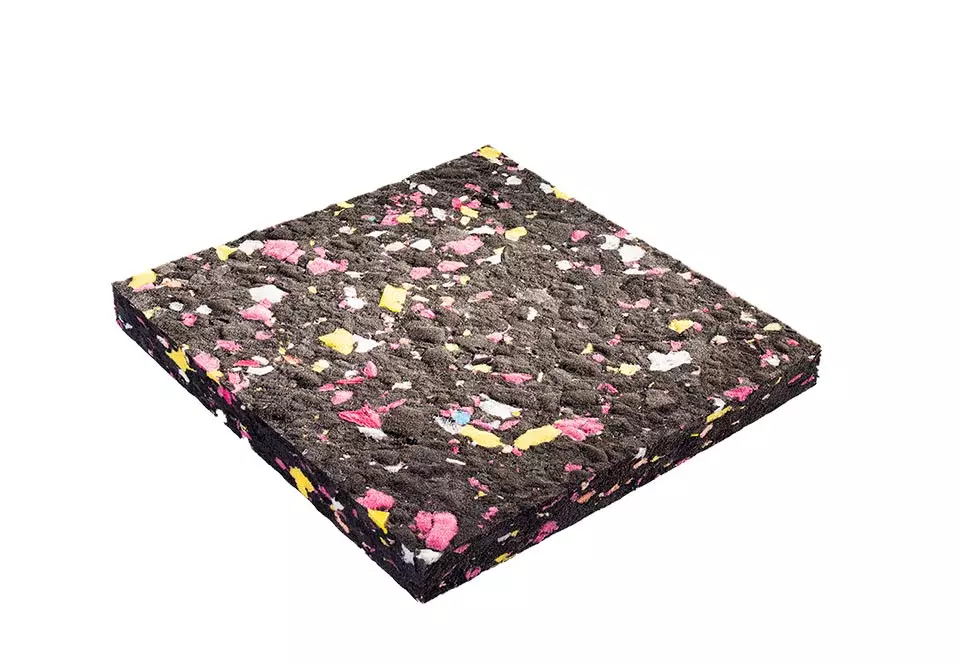RF Absorber Foams
RF absorber foams, also known as electromagnetic wave absorbing materials, are a type of foam that is designed to absorb radio frequency (RF) energy. These foams are made using specialized materials that are able to convert RF energy into heat, effectively reducing the amount of electromagnetic interference in electronic devices.
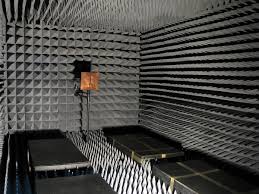
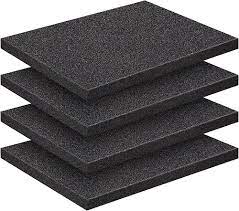
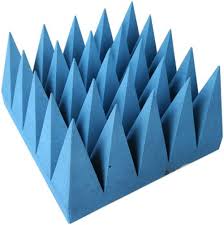
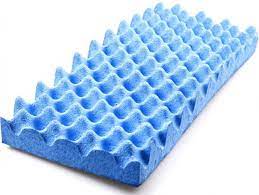
| Product Specification | ||
|---|---|---|
| Product Code | --- | |
| Density Available | 24, 28 & 32 Density | |
| Shape | All Shape | |
| Application | RF Chamber & Anechoic Chambers | |
| Patern | Custom | |
| Sample Available | 1 No's (300 X 300) | |
| Certification | Third Party | |
| Main Demestic Market | All India | |
| Colour | Black & Blue | |
| Grades | FR Only | |
| Third Party Confirmation | If Required | |
Product Description
RF absorber foams are a type of foam that is used to absorb radio frequency (RF) energy, thus reducing electromagnetic interference (EMI) in electronic devices. These foams have a number of unique properties that make them ideal for use in a wide range of applications.
One of the key properties of RF absorber foams is their ability to absorb RF energy over a broad range of frequencies. This is due to their high loss tangent, which means they are able to convert RF energy into heat very efficiently. This property is particularly important in applications where a wide range of frequencies need to be absorbed, such as in communication systems and radar equipment.
RF absorber foams also offer excellent thermal and mechanical properties. They are able to withstand high temperatures and are resistant to moisture, making them ideal for use in harsh environments. They are also lightweight and flexible, which makes them easy to integrate into electronic devices and communication systems.
RF Absorber Foams Characteristics
RF absorber foams are characterized by their ability to absorb and convert radio frequency (RF) energy into heat, thus reducing electromagnetic interference in electronic devices. They are made using specialized materials that are designed to have high loss tangents, meaning they can efficiently convert RF energy into heat.
These foams offer excellent thermal and mechanical properties, making them ideal for use in harsh environments. They are able to withstand high temperatures and are resistant to moisture, making them suitable for use in a wide range of applications.
RF absorber foams are also lightweight and flexible, which makes them easy to integrate into electronic devices and communication systems. They can be custom manufactured to meet the specific requirements of a particular application, including adjusting the density, thickness, and composition of the foam to meet the desired absorption properties.
One of the key characteristics of RF absorber foams is their ability to absorb RF energy over a broad range of frequencies. This makes them suitable for use in communication systems, radar equipment, and electronic testing facilities where a wide range of frequencies need to be absorbed.
In addition, RF absorber foams are able to reduce electromagnetic interference, which can improve the overall performance of electronic devices and communication systems. By absorbing RF energy, they prevent interference from outside sources, which can cause signal degradation and loss of data.
Overall, the unique characteristics of RF absorber foams make them an important type of foam for use in a variety of applications where electromagnetic interference needs to be mitigated.
RF Absorber Foams Applications
RF absorber foams have a wide range of applications across various industries where electromagnetic interference needs to be mitigated.
Here are some common applications:
Communication Systems: RF absorber foams are used in communication systems to absorb unwanted signals, reducing interference and improving the quality of transmission.
Radar Equipment: RF absorber foams are used in radar equipment to reduce the reflection of signals, improving the accuracy of readings.
Electronic Testing Facilities: RF absorber foams are used in electronic testing facilities to absorb unwanted signals, ensuring accurate measurements.
Aerospace and Defense: RF absorber foams are used in aerospace and defense applications to reduce interference and improve signal transmission.
Medical Equipment: RF absorber foams are used in medical equipment to reduce interference from other electronic devices, ensuring accurate readings and improving patient safety.
Automotive Industry: RF absorber foams are used in the automotive industry to reduce interference in electronics systems, improving the reliability and safety of vehicles.
Overall, RF absorber foams are a critical component in a wide range of applications where electromagnetic interference needs to be mitigated, ensuring accurate signal transmission, reliable operation, and improved performance.
FAQ's
RF absorbers are materials designed to absorb and dissipate electromagnetic radiation or radio frequency energy, typically in the microwave and RF frequency ranges. They are used to reduce unwanted reflections, interference, and signal noise in various applications.
RF absorbers are essential in electronic and communication systems because they help manage electromagnetic interference (EMI), reduce signal reflections, and improve signal quality. They are crucial for preventing signal degradation and ensuring reliable performance.
RF absorbers are used in applications such as anechoic chambers, radar systems, electromagnetic compatibility (EMC) testing, telecommunications, and electronic devices to minimize signal interference and maximize signal integrity.
RF absorbers work by converting electromagnetic energy into heat through dielectric or resistive properties. They are designed to attenuate RF signals and prevent unwanted reflections, effectively dissipating the energy.
Yes, RF absorbers come in various forms, including foam sheets, pyramidal absorbers, and conductive fabric-based materials. They can be made from materials like carbon-loaded foam, ferrite tiles, or microwave-absorbing composites.
Yes, RF absorbers can be customized to target specific frequency ranges and application requirements. Manufacturers often offer a range of absorber materials and designs to meet the needs of different industries and projects.


